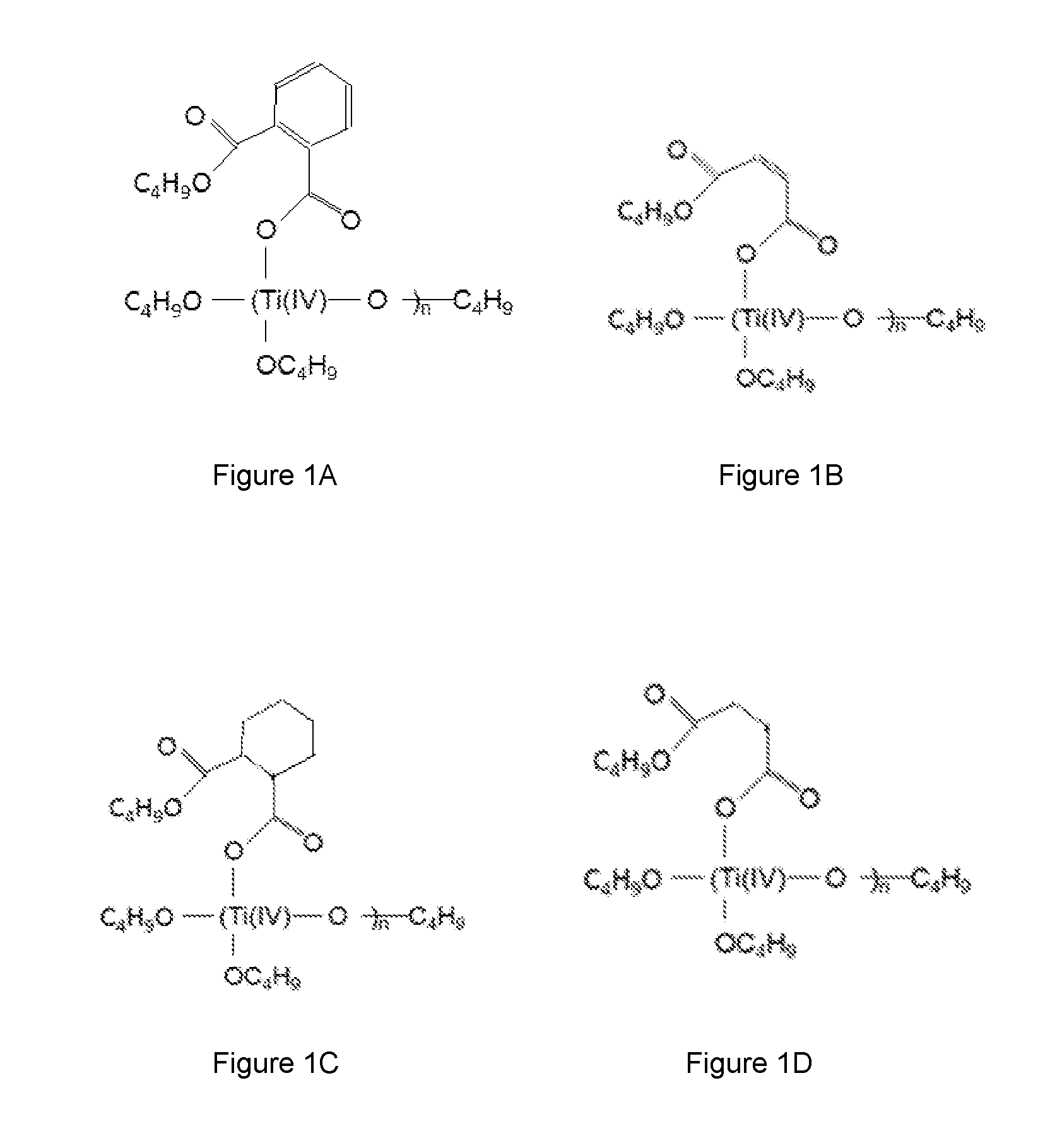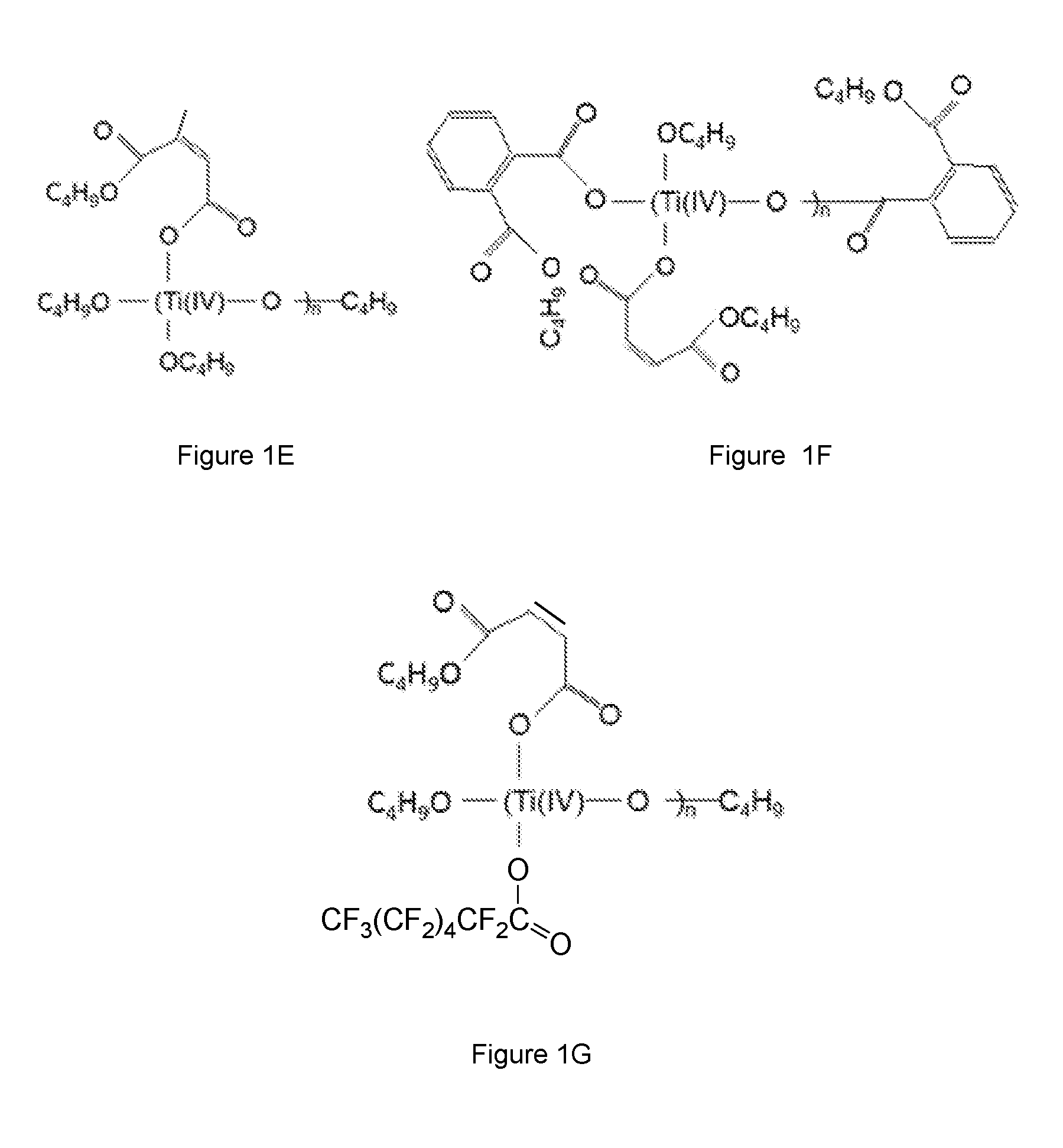Stable metal compounds, their compositions and methods
a metal compound and composition technology, applied in the direction of group 3/13 element organic compounds, instruments, photomechanical equipment, etc., can solve the problems of thin film interference effect and reflective notching, change in critical line width dimensions, and distort the uniformity of radiation
- Summary
- Abstract
- Description
- Claims
- Application Information
AI Technical Summary
Benefits of technology
Problems solved by technology
Method used
Image
Examples
synthesis example 1
[0072]40 g of Ti(IV) tetrabutoxide polymer (Ti(IV)BTP), 10 g of phthalic anhydride and 50 g of benzene were mixed by stirring and heated in a flask under nitrogen. The reaction was maintained at 60° C. for about one hour. After cooling down to room temperature, a majority of the solvent was removed by distillation and drying under vacuum. Proton NMR showed no anhydride present in the product.
synthesis example 2
[0073]40 g of Ti(IV)BTP polymer, 10.4 g of 1,2-cyclohexanedicarboxylic anhydride and 50.4 g of cyclohexane were mixed by stirring and heated in a flask under nitrogen. The reaction was maintained at 60° C. for about one hour. After cooling down to room temperature, a majority of the solvent was removed by distillation and drying under vacuum. Proton NMR showed no anhydride present in the product.
synthesis example 3
[0074]40 g of Ti(IV)BTP polymer, 10 g of phthalic anhydride and 50 g of propylene glycol monomethyl ether acetate (PGMEA) / propylene glycol monomethyl ether (PGME) 70:30 were mixed by stirring and heated in a flask under nitrogen. The reaction was maintained at 50° C. for about two hours. After cooling down to room temperature, the product with 50% solid content was stored in a brown bottle. Proton NMR showed no anhydride present in the product and was similar to that of Synthesis Example 1 except for the signals due to PGMEA / PGME solvents.
PUM
| Property | Measurement | Unit |
|---|---|---|
| mole % | aaaaa | aaaaa |
| temperatures | aaaaa | aaaaa |
| weight % | aaaaa | aaaaa |
Abstract
Description
Claims
Application Information
 Login to View More
Login to View More - R&D
- Intellectual Property
- Life Sciences
- Materials
- Tech Scout
- Unparalleled Data Quality
- Higher Quality Content
- 60% Fewer Hallucinations
Browse by: Latest US Patents, China's latest patents, Technical Efficacy Thesaurus, Application Domain, Technology Topic, Popular Technical Reports.
© 2025 PatSnap. All rights reserved.Legal|Privacy policy|Modern Slavery Act Transparency Statement|Sitemap|About US| Contact US: help@patsnap.com



